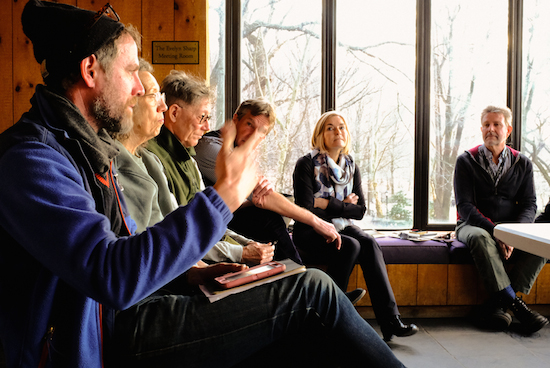
The naturalists had a vibrant meeting this month.
By Michael McDowell
Woodcocks, coyotes, snow scorpionflies, and Adriaen van der Donck were but a few of the bold-faced names mentioned at a recent gathering of the Upper West Side Neighborhood Naturalists earlier this month, which brought nearly twenty botanists, birders, gardeners, and urban naturalists of all stripes and persuasions to the Peter Jay Sharp Volunteer House near 108th Street in Riverside Park.
Dan Garodnick, the former City Councilman who now leads the Riverside Park Conservancy, was in attendance, and although the two groups are not affiliated, Garodnick expressed his support for the efforts the naturalists seek to undertake, namely: to monitor and observe nature on the Upper West Side; to educate and inform neighbors about biodiversity and nature in the community; and to advocate for nature in the decision-making processes of local government.
To that end, the UWS Neighborhood Naturalists convene prior to and attend Community Board 7 Parks & Environment Committee meetings, which are held on the third or fourth Monday of each month. A schedule of those meetings is available here.
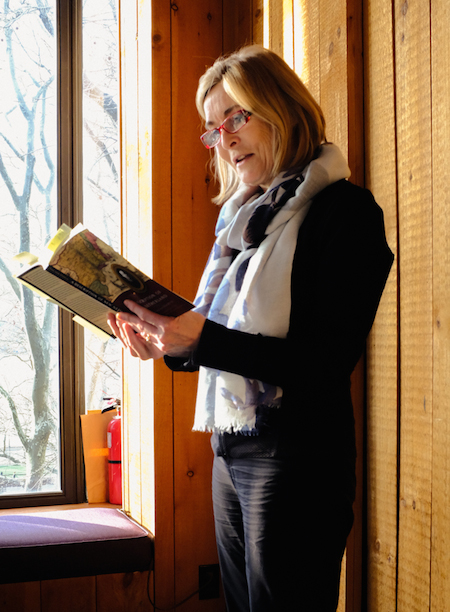
Vanessa Sellers reads from Adriaen Van Der Donck’s ‘A Description of New Netherland’. Yonkers is named for Van Der Donck, who was a major landowner in Dutch New Netherland.
Logistics aside, the naturalists traded stories of recent notable observations. One naturalist mentioned a sighting of the American woodcock, a mottled shorebird with a prominent bill, which she spotted near the main branch of the New York Public Library, on Fifth Avenue. The woodcock is currently migrating northward through the city.
“They’ve been walking around on the steps of the public library,” a man exclaimed.
“They even have library cards,” another joked.
Very small insects called snow scorpionflies—spotted at Cranberry Lake Preserve in Westchester—were another favorite sighting, after heavy snowfalls earlier this month.
“If I see six or ten of them, that’s a good day, but this year we had 89—a huge record—including pairs mating,” a naturalist noted.
There’s no need to stray too far from the neighborhood to see animals beyond birds and insects, however.
“I saw a coyote up here, on 113th, it was about twenty-feet away, the speed of it was so humbling and just fantastic, I could not believe how fast it was. It was amazing, unmistakable,” a man recounted. The coyote quickly disappeared into Riverside Park.
Otherwise, what news?
“There’s peregrine falcons everywhere, I’m seeing them out [of my window] on 107th Street, looking north…they nest on Riverside Church.”
“The turtles are coming back from their dormant period in the mud, the red-eared sliders, [or] scripta elegans.”
And finally?
“The ostrich ferns have gone absolutely bananas!”
As the sun set over the Hudson, the meeting wound down and some of the group walked to 87th Street to attend the Parks & Environment Committee meeting, where, among other items, they would seek to advocate for reclaiming more spaces for native plants in the neighborhood.
Budding botanists or curious naturalists should contact Daniel Atha at datha@nybg.org, for more information. Expertise and experience vary in the group, and all who are interested in urban nature are encouraged to attend.



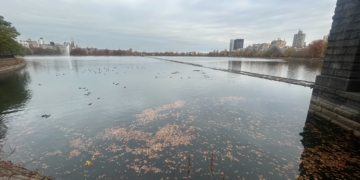
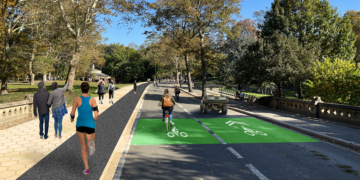



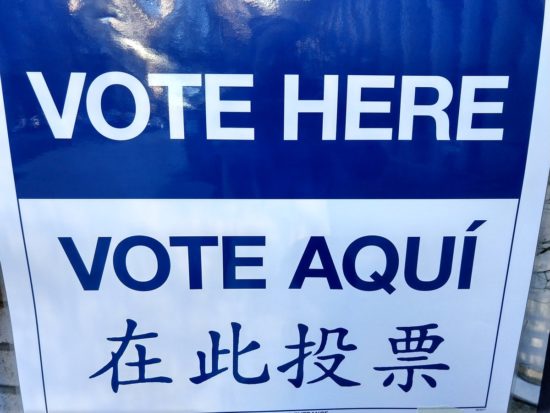
Reading from Adriaen Van Der Donck’s ‘A Description of New Netherland’? That’s AWESOME!!!
If you want a mind blowing story about how Manhattan came to be, who Van Der Donck was and how the Dutch were the true influence of tolerance in the “New World”, you MUST read “The Island at the Center of the World” by Russell Shorto.
Re: “…you MUST read “The Island at the Center of the World” by Russell Shorto.”
DEFINITELY!, an absolutely wonderful book.
Also “Exploring Historic Dutch New York”
Re: “Yonkers is named for Van Der Donck,….”
Ummm…that’s a bit of a stretch, idn’t it?
So why wasn’t it called “Donckers”…or “VanDers” ?
We know (at least some of us do) that “The Bronx” derives from the original land-owner Jonas Bronc. Maybe it could have been “JonasVille”…but that sounds too much like ‘YennemVeldt’ 😳
Anyway, as Ogden Nash wrote, “The Bronx? No Thonx”
The name “Yonkers” is derived from the Dutch word “Jonker” (the J is pronounced as a “Y”) and was an affable description of the man who owned the land, Adriaen Van Der Donck’ – an educated and wealthy young man.
Surprising, but true!
https://www.yonkerschamber.com/city-of-yonkers/early-yonkers-history/
Just finished reading “The island at the Center of the World”. A great read and available in NYPL, though had to wait quite some time, worth the wait.